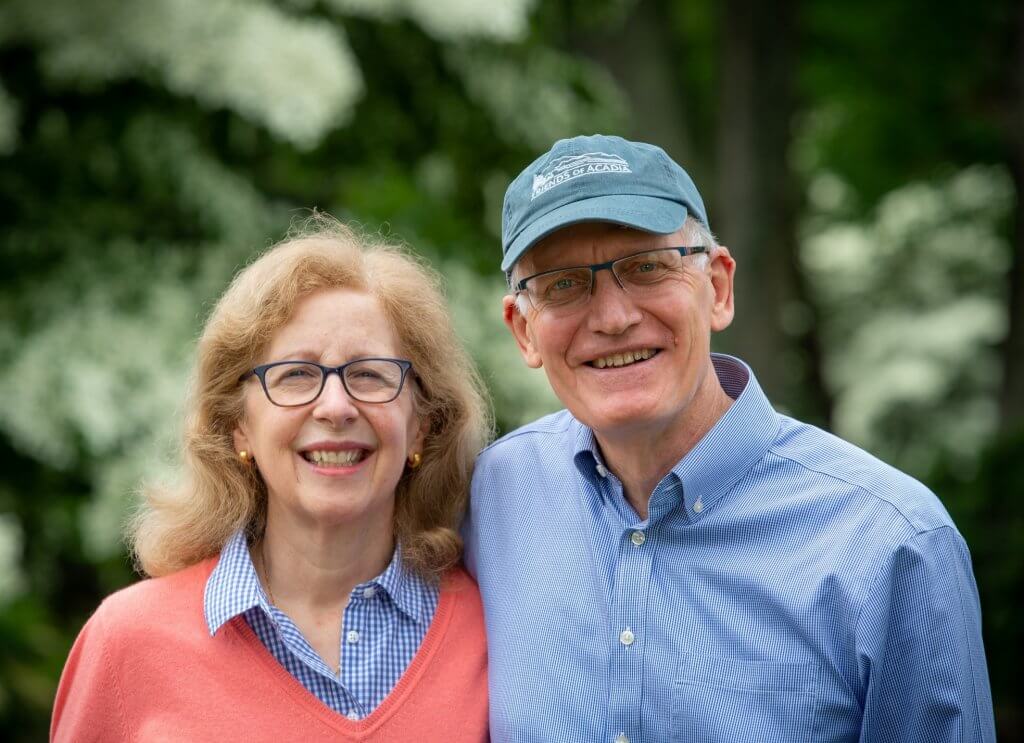At work on the afternoon of December 27, 2018, Chris Barnett felt his eyes lock momentarily onto the wall. Thinking he was just tired, he stood up to go get a sandwich. The next thing he knew, he couldn’t move and fell straight to the floor, and felt frozen in his own body, “like somebody pulled the plug out of the wall,” he said.
The cause: a tonic-clonic seizure brought on by anaplastic astrocytoma, a malignant brain tumor for which there is no cure.
“Before the seizure I couldn’t spell anaplastic astrocytoma. Now I’m living it,” said Barnett, now 66. He had no warning signs leading up to the seizure either — no headaches or blurry vision, and the only medication he used was ibuprofen once in a while when he strained his shoulder.
“It was really out of the blue, and in talking to other people who have brain tumors, my experience is unusual though not unique,” he said.
After surgery to remove the tumor, which confirmed this diagnosis, Barnett underwent what Jennifer Stefanik, NP, at Dana-Farber Cancer Institute, calls “a marathon treatment regimen.” Barnett endured six weeks of daily radiation five days a week, while taking oral chemotherapy seven days a week.
After a four week break, he then completed 12 cycles of oral chemotherapy, where he took five consecutive days of oral chemotherapy every 28 days. He finished his last chemotherapy cycle in April 2020. Now, Barnett is stable and doing well after treatment. He comes into Dana-Farber every three months for an MRI and a clinical check-up.
“He has done wonderfully and we couldn’t be any happier with his progress,” Stefanik said.

In addition to medical treatment, Barnett said that being active in Dana-Farber’s Brain Tumor Support Group has been a vital part of his overall care.
“You’re trying to process this, and knowing that other people actually live through this is really helpful,” he said of the monthly meetings, which his wife Elizabeth also attends.
“We found this extremely helpful for me as a patient and she as a caregiver,” he added. “You can compare notes with other people on how you’re dealing with everything from the big picture of how a brain tumor changes your life, and, for lack of a better term, the nuts-and-bolts types of issues related to having this diagnosis, like how to handle things like disability and insurance.”
Stefanik said that Barnett always makes sure to help others in the group, especially newly diagnosed patients “to let them know they’re not alone, and someone has been in their shoes,” she said.
“He’s so invested in his care, but he’s also invested in the care of others. It’s not something you always see. I think he feels blessed in how well he has done and wants to make sure others do as well.”
Looking to the future
Barnett continues to work part time as an engineer, doing transportation and infrastructure projects. He and Elizabeth also participate in Dana-Farber’s Boston Marathon Jimmy Fund Walk to raise money to support cancer research and cancer care.
They continue to travel, and to take an annual vacation trip to Maine, which they’ve been doing for nearly 40 years. But even when he’s hours away from his care team, he knows they’re only an email away. On one recent trip to Maine, Barnett felt a little dizzy, but he was able to contact his care team right away, who adjusted his medication and told him to make sure to hydrate. “I can’t imagine going through this without that kind of support,” he said.
Being involved in the Dana-Farber community beyond just treatment has helped him reframe what was initially a terrifying diagnosis.
“Through treatment, I’ve been given more time. The question is not, when will that end, but what am I going to do with it?”
